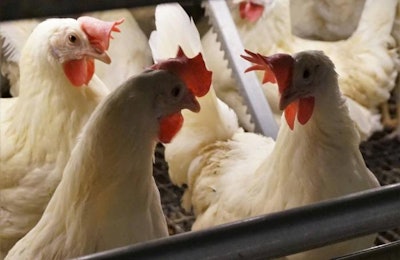
More than 51.5 billion cage-free eggs will be needed annually to serve the U.S. market, according to estimates published by the United Egg Producers.
In a July 28 letter to its members, the egg farmer cooperative published an updated report from the U.S. Department of Agriculture’s Agricultural Analytics Division estimating companies pledging to serve only cage-free eggs will need 190.4 million hens to lay 51.485 billion eggs annually by 2025.
Currently, there are 16.6 million non-organic cage-free layers in the U.S. – a 28 percent increase in size since the same figures were published in April – but the size of the flock will need to increase 1,047 percent by 2025 to satisfy cage-free demand.
If the pledges matured today, 66 percent of the U.S.’ 276 million-bird non-organic layer flock would need to be housed in cage-free facilities to meet the demand.
“The 16.6 million hens currently in cage-free production could indicate a shortage of 174 million hens to meet the growing demand over the next 9 years,” the newsletter said.
To help egg producers decide which cage-free housing option is best for them, WATT Global Media published a series of stories highlighting the pros and cons of aviaries, convertible or combi-style housing and floor systems.
Explore cage-free commitments through sortable tables
The report also analyzed 41 restaurant companies, eight food distributors, 48 grocers, seven hospitality and travel companies, 13 manufacturers and four convenience store chains who have committed to go cage-free by 2030. View and sort within the following tables to see when those retailers are due to go cage-free, their number of outlets around the U.S., how many eggs they need on an annual basis and how many hens would be needed to supply each retailer. The number of hens needed is estimated using the assumption a single hen will lay 270 eggs a year.
*Does not yet include all food manufacturers committed to date.


















